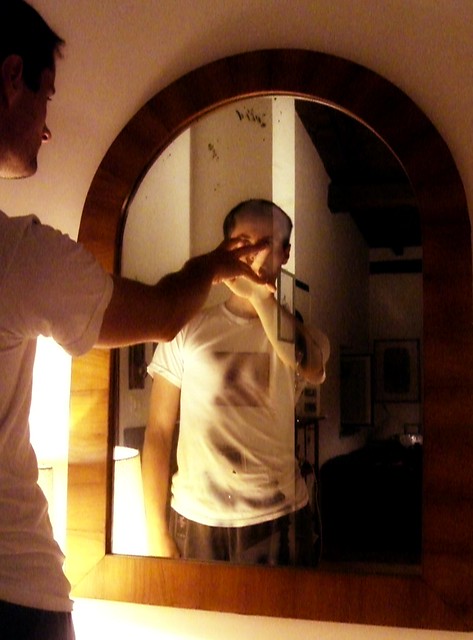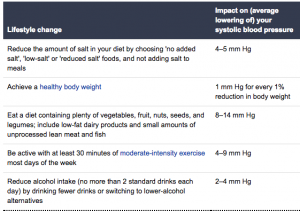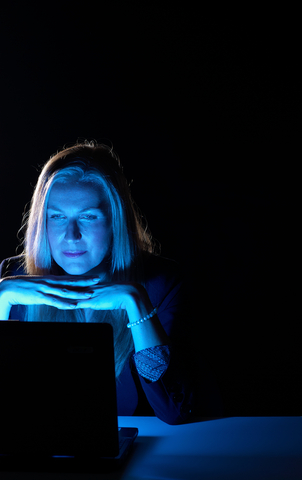GUYSIDE: salty talk about your diet
 I’ve been keeping an eye on my blood pressure these days. With a family history of hypertension, it just makes sense. And so far, my results are good. A while ago, I stopped at a local pharmacy and used their automated machine and saw a couple of readings heading into the high range. But more accurate readings have put it further down in the normal range, so that’s good.
I’ve been keeping an eye on my blood pressure these days. With a family history of hypertension, it just makes sense. And so far, my results are good. A while ago, I stopped at a local pharmacy and used their automated machine and saw a couple of readings heading into the high range. But more accurate readings have put it further down in the normal range, so that’s good.
But when I looked at my profile for hypertension risk factors, I was struck that there wasn’t a great deal I could do. The major risk factors for hypertension, according to the Mayo Clinic, are:
- Age. (Hypertension is more common in men around 45 or so, and becomes more common in women around 65)
- Race. (High blood pressure is particularly common among blacks)
- Family history.
- Being overweight or obese.
- Not being physically active.
- Using tobacco.
- Too much salt (sodium) in your diet.
- Too little potassium in your diet.
- Too little vitamin D in your diet.
- Drinking too much alcohol.
- Stress.
I do pretty well on most of these. But of the ones I can control, the one about sodium sticks out. As a man and a lover of food that I KNOW is bad for me, I know that I can be the author of my own hypertensive misfortune. Burgers, fries, onion rings, chicken wings — it would be foolish to pretend they don’t have a lot of sodium in there. But there are a ton of foods out there that you wouldn’t expect to have high sodium levels.
We often have pizzas on naan bread for a quick and easy weekday meal. On top, prosciutto, pears, brie, and basil. I knew the prosciutto would be high in sodium — after all, it’s a cured meat. But the naan bread itself has a surprising amount of sodium. Between those two ingredients, one naan pizza is likely delivering more than half my daily allowance of sodium.
Chicken breasts can be injected with brine during processing, increasing their sodium content drastically. A slice of process cheese might have 20% of your daily allowance of sodium!
If you have french fries, you expect them to be salty. But if you add a tablespoon or two of ketchup, you’re looking at 400 mg of sodium just in that!
And none of this counts restaurant or takeout food, which can be extremely high in sodium. You can see just how easy it would be to end up with more than your roughly 2,500 mg of sodium per day:
- 350 mg: a bowl of Raisin Bran.
- 870 mg: a bagel and cream cheese
- 1220 mg breakfast
- 1600 mg: 100 grams of deli ham on white bread with mustard.
- 1600 mg lunch
- 393 mg: baked chicken breast
- 418 mg: baked potato
- 460 mg: cup of canned peas
- 1271 mg supper
- 744 mg: 1/2 cup of salsa
- 420 mg: 24 tortilla chips
- 1164 mg snack
That’s a whopping 5255 mg of sodium, more than twice the recommended amount in a day, without a single shake of your salt shaker, without eating out, and with lots of things that seem healthy at first glance. (Sodium figures from the Fat Secret website)
You can’t change your age, your race, or your family history of hypertension. But if you start to track things like sodium, you do see where you can help prevent hypertension, or if you have it, improve it without resorting to drugs. And that’s a good thing.
(Pretzel photo is a CC-licenced image from Flickr user Jenn Durfey)
Read MoreGuyside: feeling tension over hypertension
Cosmetic surgery for guys?!
Last week, I talked about how men’s self-perception changes over time, as they age. After the column, I was amused and touched to have one friend contact me and ask if I was okay. The answer, for the record, was and is yes.
I’m pretty comfortable with my physical self. That doesn’t mean I wasn’t ecstatic to be on my bike last Sunday for my first outside ride of the season, or looking forward to dropping a few pounds from around the waist as I ride more and more frequently.
I am in not even in the ballpark where I might consider getting a surgical procedure done to enhance my looks. But apparently, more and more of my counterparts are in that ballpark. According to a Business Insider article, men are the new growth area for cosmetic surgery. The American Society for Aesthetic Plastic Surgery reported that cosmetic procedures carried out on men more than doubled between 1997 and 2012.
According to this New York cosmetic surgeon, there are four types of guys who get cosmetic surgery: the “male model”, the “bodybuilder”, the “CEO”, and the “athletic dad.” I don’t fit any of those, so perhaps that’s why cosmetic surgery is not on my radar. He also associates certain types of procedures with each of those types.
So what do guys get done? The top five procedures (in the US at least) are: liposuction, rhinoplasty, eyelid surgery, breast reduction to treat enlarged male breast, and ear shaping. While you might associate cosmetic surgery with hair replacement, that procedure on its own is almost as big as all cosmetic surgery in terms of numbers of procedures.
I don’t want to judge. If someone wants to get one or more of these procedures, that’s up to them. For me, I think of it like spending megabucks on hotsy-totsy carbon wheels for my bike. Yes, I might save up to a pound. But of course, if I ate better and exercised more, I could probably lose way MORE than a pound.
Like most choices we face, cosmetic surgery has benefits, risks, costs and opportunities attached to it. For me, I can’t make the calculation work out in favour. But where do you draw the line? Are contacts a cosmetic procedure? What about manscaping? What about men who wear cosmetics?
What decisions have you made? How far are you willing to go to keep or enhance your looks? Tell me about it in the comments.
Read MoreLosing weight by the dawn’s early light
 Did you read Monday’s post about nighttime light exposure and weight gain? Today’s post provides broader context in that there are data showing that greater exposure to light during the daytime may influence body weight independently of when you sleep and how long you sleep for.
Did you read Monday’s post about nighttime light exposure and weight gain? Today’s post provides broader context in that there are data showing that greater exposure to light during the daytime may influence body weight independently of when you sleep and how long you sleep for.
In a small study conducted by University of Northwestern researchers (which calculated dietary intake, sleep and light exposure over a week’s time), people exposed to the most intense light levels earlier in the day had lower BMIs. Moreover, the later the hour of moderate light exposure, the higher the BMI. A possible reason is that natural changes in light intensity that occur in the morning versus in the afternoon/evening might have a role in influencing weight. This time of day is the time when the amount of blue light (light with a shorter wavelength) is highest; blue light appears to strongly influence circadian rhythms, which in turn, influences metabolism. Exposure to blue light during the day can also positively alter the secretion of melatonin at night, helping to keep the weight off.
Although these findings don’t show cause and effect, they suggest that not getting sufficient light at the correct times of day may be affecting your weight in ways that you’ve never considered. Future research may tease out the way that light may work to modify weight gain. In the interim? Spring has sprung in our part of the world and the days are growing longer. Get out of the house earlier and for longer periods of time; who knows? It may help your weight as well as your mood.
Read MoreGaining weight at the speed of (night) light
“Bodies have their own light which they consume to live: they burn, they are not lit from the outside.”
― Egon Schiele
There are those of us who crave the light. And those who crave the darkness. Yet, disrupting the yin/yang that exists between the balance that defines the framework for these differences can wreak significant havoc on the body. In a review published online this week in Endocrine Reviews, Ohio State researchers have examined the effects of night light on the body’s circadian clock. And the results are not pretty.
Obesity has become a global problem and in the U.S. alone, numbers of people who qualify as obese (BMI>50) increased by as much as 75% between the years 2000 and 2005. Concurrent with this change has been the explosion in the use of electric light at night, which has bolstered the ability to self set the sleep/wake cycle. And while economically, this may be an attractive proposition, light at the wrong time of day, that is, light that disrupts the body’s natural circadian rhythm can lead to cancer, disrupt sleep, interfere with mood, impair cognition and perhaps most importantly, interfere with the metabolism. Data show that the increase in exposure to light tracks pretty closely to the eruption of global obesity and metabolic disorders. Moreover, even dim light (think: light from mobile devices) has been shown to alter circadian genes, especially those involved in nutrition and metabolism, affecting hunger and appetite. More troubling is the fact that the researchers say that this disruption is reciprocal, so, while interfering with the body’s circadian rhythm can lead to obesity, the metabolic changes that results in turn, alter circadian rhythms. This endless loop may be a key reason why so many of us are gaining weight. Other key factors include disruption in melatonin levels (which affects sleep pattern) and cortisol levels (related to stress), and unfortunately, these changes can occur through exposure to low light levels at the wrong time of day.
For all intent and purposes, modern society is a 24 hour society. Researchers say that over 99% of the US and Europe is exposed to urban light pollution and many people bring light into their homes at night, watch TV late night and use computers just prior to and in bed. They add that two-thirds of the population experience social ‘jet lag,’ a term coined to describe the habit of following different sleep schedules on the weekdays and weekends. And, the issue is an environmental one as well; the health of plants and animal species are affected by artificial light at night.
The solution may be to start to bring back the dark . Use black out curtains or shades, turn off hallway lights and keep the computers and phones out of the bedroom. Try to maintain a regular sleep schedule. And be mindful of when and how often you are eating at ‘irregular hours.’ Mostly, however, pay attention to your habits and see what changes can be made. There are many factors that contribute to obesity but it appears that for many of us, one of the most important might be nighttime light exposure.
As Schiele so aptly points out, we have our own light that does not require outside illumination, at least not at certain times of the 24 hour period that makes up a healthy, balanced life.
Read More
Mirror, mirror, on Guyside’s wall…
 I recently came upon a photo of me that was about 10 years old or so. I didn’t think much of it, but then I took a closer look to see if I could spot the telltale signs of aging in it. It was hard. I’m a little heavier now than I was then (about 192 compared to about 185); there are more than a few gray hairs in my facial hair, but not much on top; I couldn’t see the advance of wrinkles.
I recently came upon a photo of me that was about 10 years old or so. I didn’t think much of it, but then I took a closer look to see if I could spot the telltale signs of aging in it. It was hard. I’m a little heavier now than I was then (about 192 compared to about 185); there are more than a few gray hairs in my facial hair, but not much on top; I couldn’t see the advance of wrinkles.
Trust me. I am not Dorian Gray. But I think that guys are able to see exactly what they want to see in mirrors or photographs. A classic Canadian folk song called “Lies” is about a woman confronting her face in the mirror, with one couplet: “She shakes off the bitter web she wove / Gently puts the mirror face down by the stove.” From the outside, at least, I think women look at themselves and see flaws, while men look at themselves and see an idealized version of themselves.
I don’t think I have to argue that for many women, body image is a big problem. But I want to argue that the male tendency to ignore reality isn’t an asset. If we “can’t see” the toll that time and our choices take on our body, then men could be opening ourselves up to health issues.
I was recently part of an online discussion where a mother was talking about how quickly her daughter would look at herself and wonder if she was too fat (this in elementary school!), while the girl’s quite-average-shaped younger brother would come to his mother and demand she demonstrate awe at his huge biceps and muscles! While I suspect that everyone in adolescence is hypersensitive to body issues (why don’t my boobs look like hers, why can’t I get rid of these pimples, why am I 6’1″ and weigh under 140 — that last one was me, by the way), it’s disconcerting to think that even in early childhood, there are already seeds of dissatisfaction with who we are, and the willingness to rely on our fantasy vision of ourselves rather than to simply acknowledge reality.
Since the 1980s, when I was thin enough, as my dad used to say, “to have to run around in the shower to get wet,” I’ve put on about 55 pounds. I needed some of that. But maybe not all of that. Even my idealized eyes can see that. I’ll never be a bodybuilder, never be “musclebound.” Given the raw material, I would have to either become an utter gym rat, or I’d end up using dangerous methods like steroids to achieve some level of muscularity. And I’m not willing to risk my health for an image. I like feeling fit, I like feeling toned. But for me, the “Men’s Health” six-pack or the arms of a pro wrestler aren’t worth it.
But the question then becomes: if you recognize the need for change, then how to make that change. Next week, I’ll be talking about cosmetic surgery for men.
(photo CC-licenced by Flickr user Michele di Trani)
Read More







